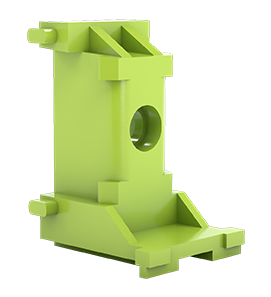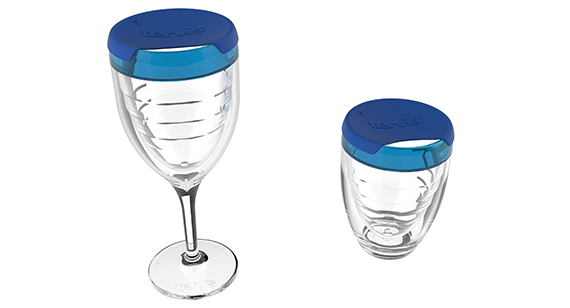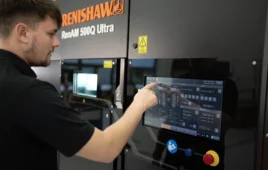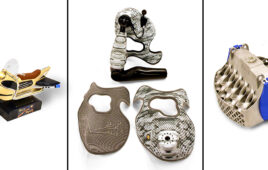Today’s volatile market – no matter the industry – wreaks havoc on even the best inventory strategies. On-demand manufacturing, though, gives engineers a way to use their inventory model to create the parts they need, when they need them. No more managing excess inventory or tying up cash flow in products that won’t be sold in weeks, months, or even years.
On-demand manufacturing is a method that enables companies to produce goods literally on demand. Engineers and supply chain managers can manage inventory-to-market conditions, thereby creating a flexible supply chain that doesn’t limit cash flow.
On-demand manufacturing uses technology to automate manufacturing from initial quote to final design to production. By automating these steps, on-demand manufacturing significantly cuts down the time it takes to obtain a physical product. With Protolabs’ on-demand manufacturing model, engineers can get a quote in hours and parts in as little as one day.
The benefits of on-demand manufacturing
For the design engineer, on-demand manufacturing offers a number of benefits, but first and foremost, it offers a distinct competitive advantage: Speed.
Immediate design feedback enables engineers to iterate faster and validate designs more quickly. Ultimately, this shortens the development cycle, which creates a faster path to market, and ultimately, revenue.
For example, Protolabs rapid injection molding process (a part of the company’s on-demand manufacturing approach) leverages technology and automation to shorten the development process and delivers a complete part in as fast as one day.
In production, on-demand manufacturing also delivers benefits. Traditional manufacturing models meant that once you were ready for production, you would produce part after part, putting them into storage until the market consumed your existing inventory.
On-demand manufacturing, though, gives engineers the opportunity to continually improve on the product, even after it goes to market. In doing so, they don’t lose funds tied up in inventory – and can ensure they maintain their competitive edge in the market.
On-demand manufacturing also offers an opportunity for mass customization by enabling low-volume production so that cost is no longer a barrier to creating products that work for distinct segments of the market.
Because of its flexibility, on-demand manufacturing works for any stage in the product development lifecycle. The question then becomes which manufacturing process to use, given where you are in product development. For those in the ideation phase of a new product, for instance, CNC machining or 3D printing may be the initial steps before moving to injection molding and investing in a mold.
Best practices for on-demand manufacturing
While on-demand manufacturing gives customers flexibility for their product development, there are some best practices:
- Have a CAD design ready for review. Even if a design engineer doesn’t have a final design ready, submitting what they do have for design for manufacturing (DFM) analysis can help the engineer iterate more quickly and validate designs faster. At Protolabs, an experienced team of application engineers provides support with DFM analyses to make proposed changes and improve a design. During the design review, engineers can review tradeoffs for cost as well. Also discussing quality needs including inspection and product part approval early in the process is beneficial for a smoother transition to production.
- On-demand manufacturing works best when you adapt your supply chain, which requires more visibility and cross-collaboration across an organization. An adaptive inventory model changes how many organizations operate today – and with that, it requires some work upfront to ensure your supply chain model fits how you manage inventory, as well as product lifecycles.
- Visibility into your supply chain – and key performance indicators – gives you the insight you need to make decisions on a model that can adapt to how the market fluctuates and changes in a given timeframe.
Communication is key so bringing other functions like quality assurance and supply chain management early into the process enables a win-win for everyone involved. The Protolabs platform enables this ease of communication and alignment.
Meeting customer desires quickly
Tervis, a manufacturer of double-walled tumblers, developed a wine glass that its customers loved. The design engineers at the company needed to iterate quickly to bring a covered wine glass model to market to meet customer desires. A design challenge emerged first, but once Tervis iterated, they were able to bring the product to market. Then, they faced a new challenge—the product immediately sold out. Using Protolabs’ on-demand manufacturing services, they were able to have parts in hand in 10 days to meet the unanticipated market demand. Read the case study here.
Quick summary
On-demand manufacturing encompasses the following:
– Agile hardware development – quickly iterate after getting feedback from customers on different prototypes
– Once the design is finalized, perform engineering validation test with digital inspection reports.
– The prototype part can be transferred to on-demand production.
– Using the same vendor for prototyping and production keeps all the learning and eliminates the risk of taking the part to production
– New products are hard to forecast so the on-demand model removes many challenges with forecasting.
– As customers adopt the product, engineers get feedback from revenue-generating customers
– This feedback could enable customization leading to easily expanding a product line and improving adoption with better product-market fit.
Protolabs
www.protolabs.com
Filed Under: Molding • injection molding components, Make Parts Fast







